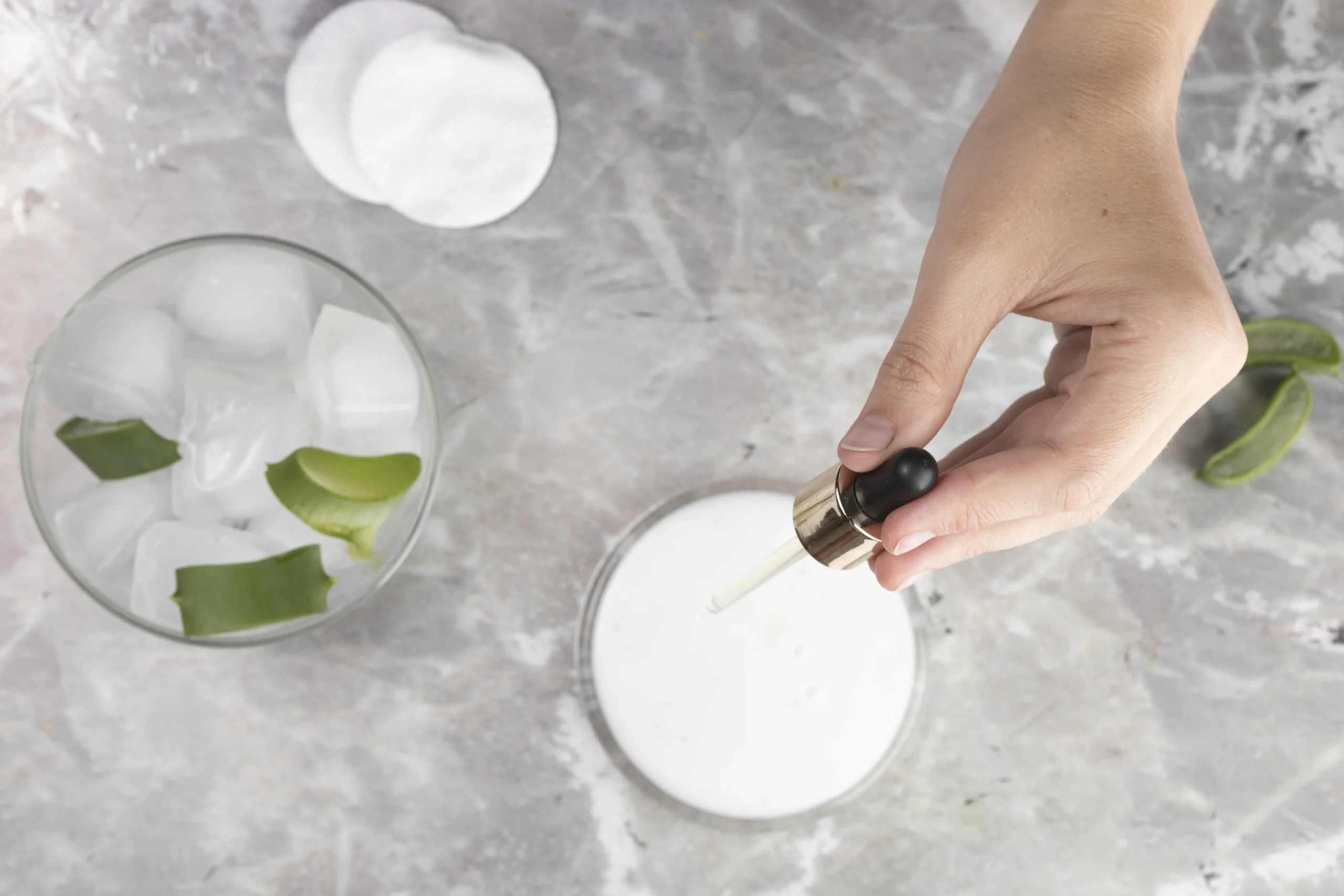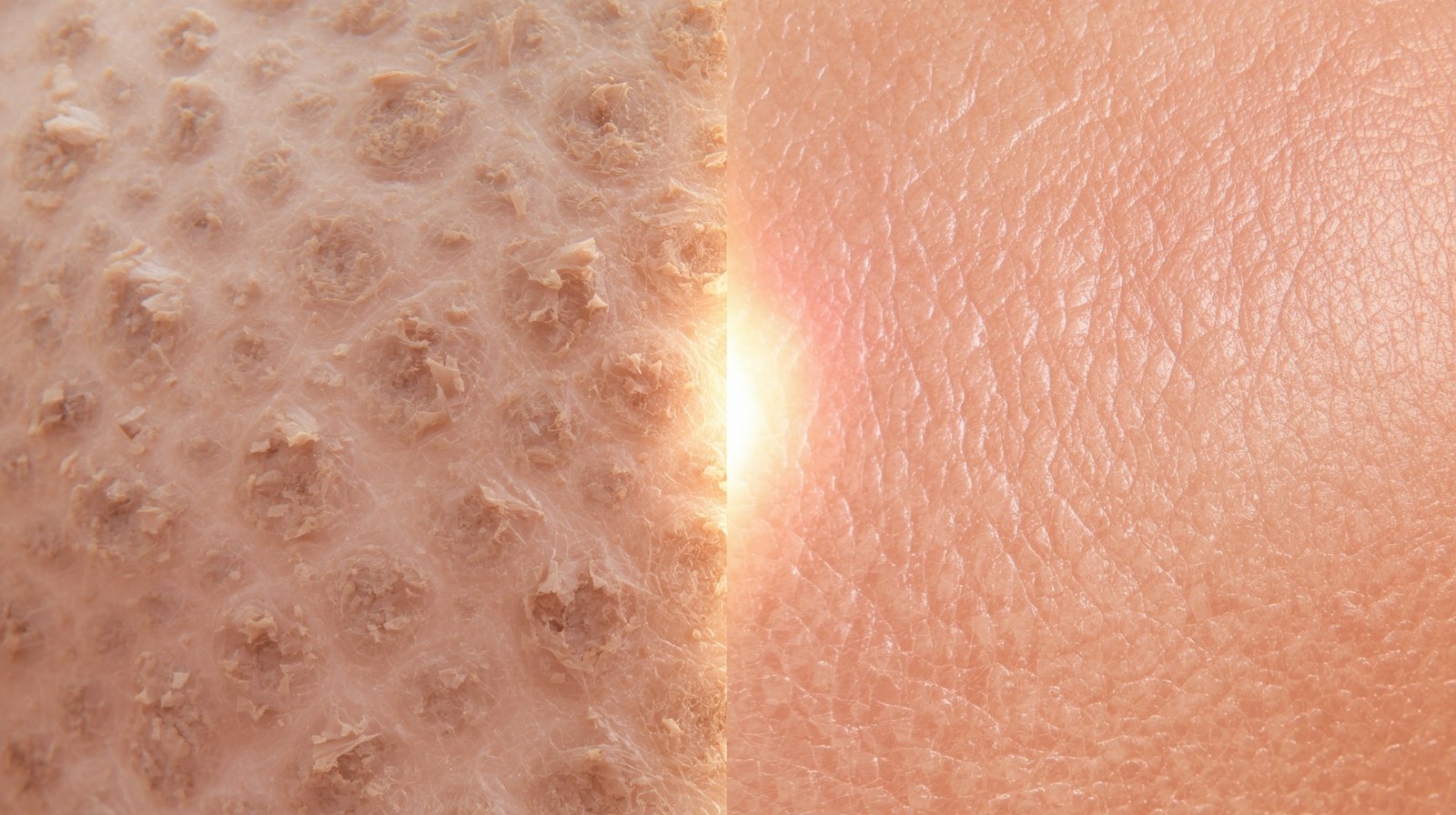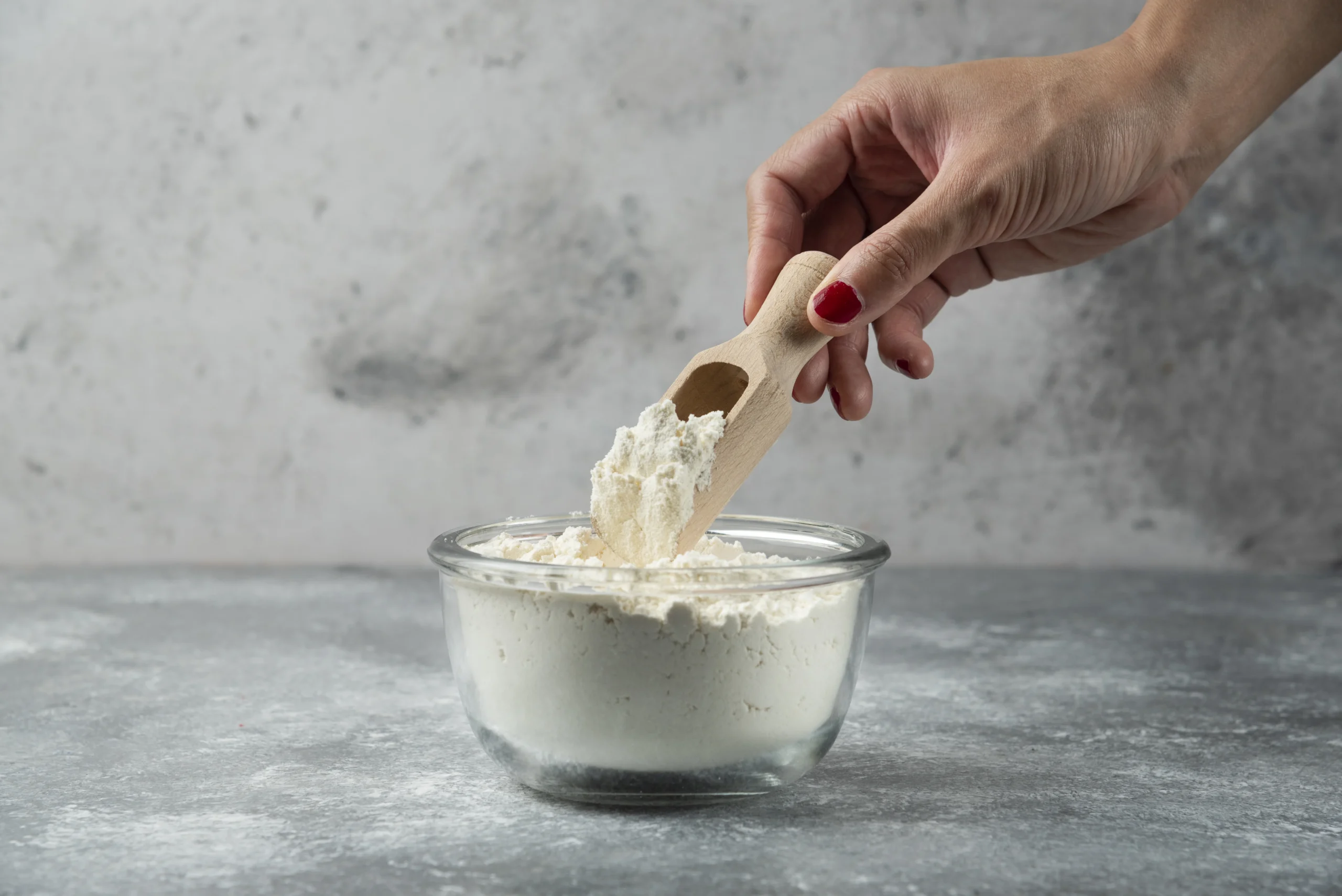Introduction
In the world of cosmetic formulation, few ingredients command as much respect as glycolic acid and niacinamide. Glycolic acid, the smallest of the alpha-hydroxy acids (AHAs), is the gold standard for chemical exfoliation. Niacinamide, a form of Vitamin B3, is the industry’s versatile powerhouse, celebrated for everything from strengthening the skin barrier to regulating sebum.
For years, a persistent industry myth has cautioned formulators against using these two actives in the same product. The prevailing wisdom warned of chemical incompatibility, reduced efficacy, and potential skin irritation.
But is this caution still relevant with today’s advanced formulation techniques?
As a leading manufacturer of high-purity glycolic acid, the team at Avid Organics believes in empowering formulators with scientific clarity. In this technical guide, we will dissect the chemistry, debunk the myth, and provide best practices for successfully combining glycolic acid and niacinamide to create sophisticated, multi-benefit skincare products.
Quick Look: Glycolic Acid vs Niacinamide
| Aspect | Glycolic Acid | Niacinamide |
| What It Is | An alpha-hydroxy acid (AHA) | A form of Vitamin B3 (nicotinamide) |
| Primary Function | Exfoliates dead skin cells | Repairs skin barrier, soothes, controls oil |
| Optimal pH | Low pH (< 4.0) for maximum efficacy | Neutral pH (~6.0) for optimal stability |
| Key Benefit | Improves skin texture and radiance | Improves skin tone and reduces inflammation |
| Formulation Concern | Potential for irritation at high concentrations | Can hydrolyze to nicotinic acid at very low pH |
The Root of the Controversy: A Lesson in pH and Hydrolysis
The concern over mixing these two ingredients isn’t baseless; it’s rooted in a fundamental chemical reaction:
- Glycolic Acid’s Environment: For glycolic acid to be an effective exfoliant, it must be formulated at a low pH, typically below 4.0. This ensures a sufficient amount of the acid is in its “free acid” form, allowing it to penetrate the stratum corneum and perform its function.
- Niacinamide’s Hydrolysis Risk: Niacinamide (also known as nicotinamide) is generally stable. However, when subjected to a strongly acidic (or alkaline) environment for a prolonged period, it can hydrolyze, converting into nicotinic acid (commonly known as niacin).
This resulting nicotinic acid is the true culprit behind the controversy. It is a potent vasodilator, meaning it causes blood vessels to expand, which can lead to the infamous “niacin flush”—an episode of temporary, but often uncomfortable, skin redness, tingling, and warmth. For a cosmetic product, this is an undesirable and alarming side effect.
Debunking the Myth: Why Modern Formulations Succeed
While the hydrolysis reaction is real, the idea that it instantly occurs upon mixing is a gross oversimplification. The conversion of niacinamide to nicotinic acid is a slow process that is highly dependent on temperature and time.
In a finished cosmetic product stored under normal conditions, the rate of conversion is practically negligible. Modern formulation science has provided us with several strategies to ensure these two powerhouses can coexist safely and effectively in a single bottle:
- Finding the pH “Sweet Spot”: Formulators can target a pH range of 4.5 – 5.5. In this zone, the glycolic acid remains effective (though slightly less aggressive than at pH 3.5), while the rate of niacinamide hydrolysis is slowed to a near halt, preventing the formation of any significant amount of nicotinic acid over the product’s shelf life.
- Utilizing Buffered Systems: Incorporating buffering agents (like citrates or phosphates) is key to creating a stable pH environment. This prevents the pH from drifting over time, ensuring the formula remains within the safe and effective zone from the first use to the last.
- Advanced Delivery Systems: For highly concentrated formulas, techniques like encapsulation can be used. Encapsulating one of the actives creates a micro-barrier, allowing for a timed or sequential release upon application and minimizing direct interaction within the product vehicle.
Best Practices for Co-Formulating Glycolic Acid and Niacinamide
For chemists looking to create a stable and elegant Glycolic Acid + Niacinamide formula, we recommend the following:
- Start with High-Purity Ingredients: The stability and predictability of your formulation begin with the quality of your raw materials. Using a high-purity, low-impurity source like Avid Organics’ Glycolic Acid ensures there are no unknown variables that could disrupt your system’s pH or stability.
- Conduct Rigorous Stability Testing: There is no substitute for data. Test your lab batches under accelerated stability conditions (e.g., 40°C for three months) and monitor for any pH drift or signs of crystallization. Analytical testing (like HPLC) can be used to confirm that nicotinic acid levels remain well below the threshold for irritation.
- Optimize Concentrations: A higher concentration of actives naturally increases the potential for irritation. Consider formulations with clinically effective, yet moderate, percentages, such as 3-5% Glycolic Acid and 2-5% Niacinamide, to achieve synergistic benefits without compromising the skin barrier.
Frequently Asked Questions (FAQs)
1. Will using glycolic acid and niacinamide together in one product cause skin irritation?
Not necessarily. A well-formulated product with glycolic acid and niacinamide that manages pH will deliver the benefits of both ingredients. Irritation is usually caused by an unstable formula where niacinamide converts to nicotinic acid (the “niacin flush”), not by the combination of glycolic acid and niacinamide itself.
2. Is it better to layer separate serums or use a single, combined product?
A single, professionally formulated product containing both glycolic acid and niacinamide is often superior as it’s specifically designed for optimal pH and stability. Layering can also be effective, but it’s best to wait 15-20 minutes after applying the glycolic acid product to allow your skin’s pH to partially re-normalize before applying the niacinamide.
3. What is the ideal pH for a stable formula that contains both glycolic acid and niacinamide, and how does it impact efficacy?
The ideal “sweet spot” is typically between pH 4.5 and 5.5. In this range, glycolic acid remains effective for exfoliation, while the potential for niacinamide to convert into irritating nicotinic acid is negligible. This ensures that the formula for glycolic acid and niacinamide delivers on its promises without causing issues.
4. Are there concentration limits to consider when formulating with glycolic acid and niacinamide?
Yes. While there are no strict rules, it’s wise to work with moderate, clinically-proven concentrations (e.g., 3-5% for glycolic acid and 2-5% for niacinamide). Pushing concentrations of both actives too high in a single formula of glycolic acid and niacinamide increases the complexity of maintaining stability and raises the overall potential for skin sensitization.
5. What are the main synergistic benefits of using these actives in the same routine?
The primary synergistic benefit of using glycolic acid and niacinamide together is a comprehensive approach to skin health. Glycolic acid works on the surface to exfoliate and smooth texture, while niacinamide works deeper to strengthen the skin barrier and regulate oil. This two-pronged action leads to better overall results than using either ingredient alone.
Conclusion: A Synergistic and Safe Combination
The verdict is clear: Yes, you can absolutely formulate glycolic acid and niacinamide together.
The long-standing myth is based on a chemical possibility, not a real-world certainty in a well-formulated product. By carefully managing pH, using high-quality raw materials, and conducting thorough stability testing, formulators can confidently create powerful products that deliver the exfoliating benefits of glycolic acid and the barrier-repairing properties of niacinamide in one synergistic package. Don’t let outdated myths limit your innovation.
Ready to formulate your next breakthrough skincare product?
Partner with Avid Organics for the highest purity glycolic acid and the expert technical support your R&D team needs to succeed. [Contact our team today to request a sample or discuss your formulation challenges.]
For more updates on our latest innovations, sustainability initiatives, and upcoming events, follow us on LinkedIn and stay connected through our official website. Stay tuned for exciting developments as we continue to push the boundaries of nutraceutical excellence!



